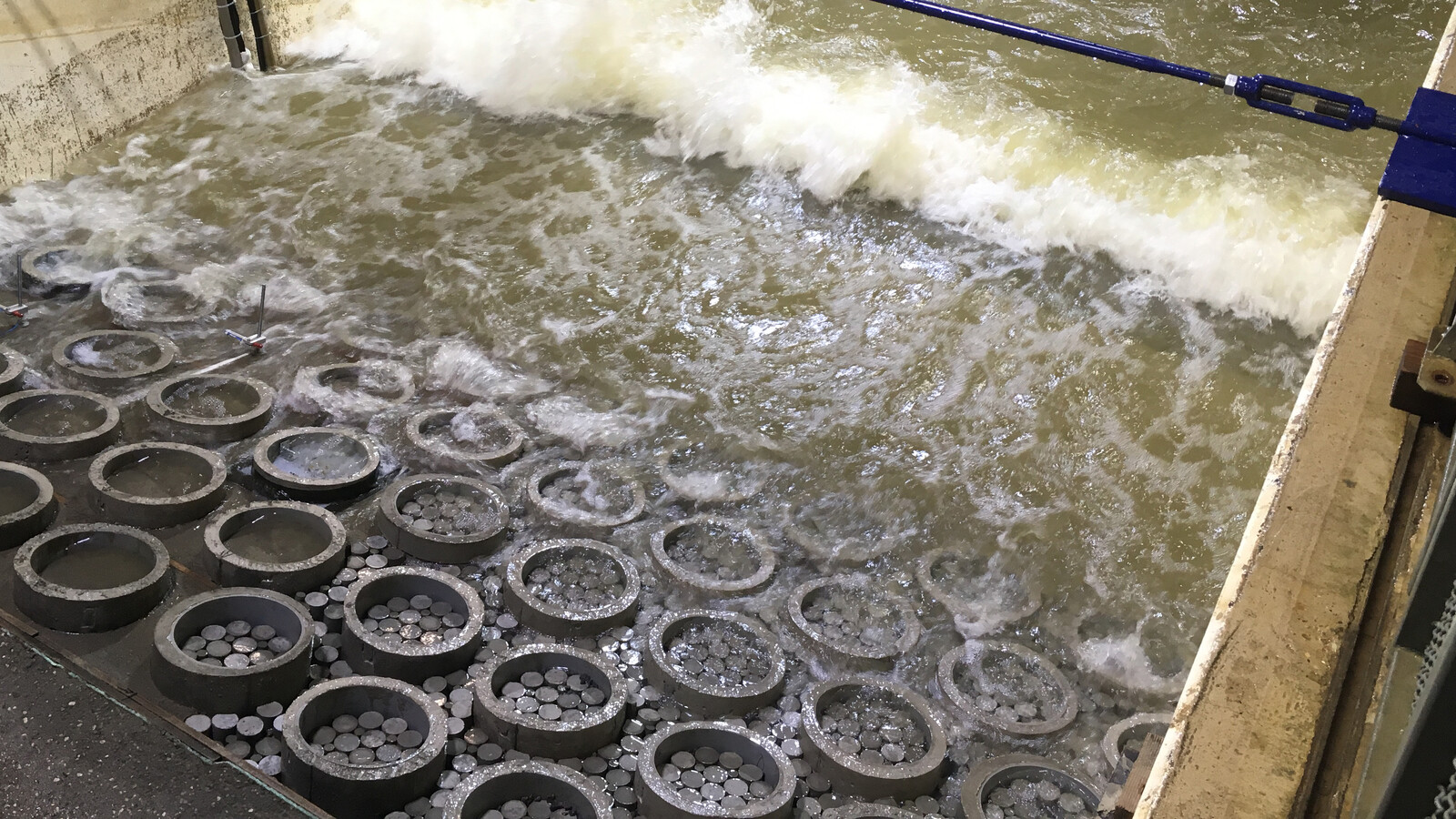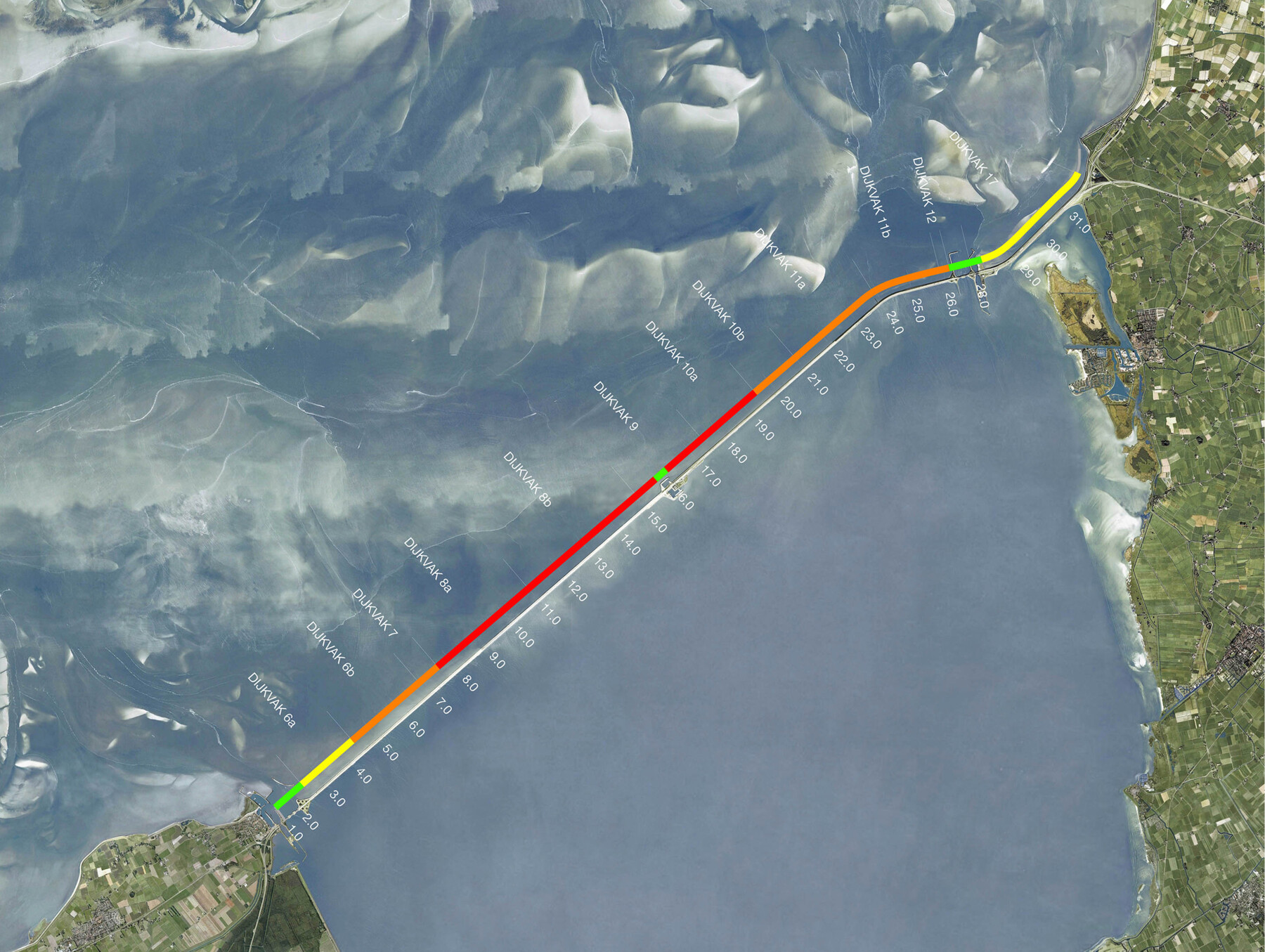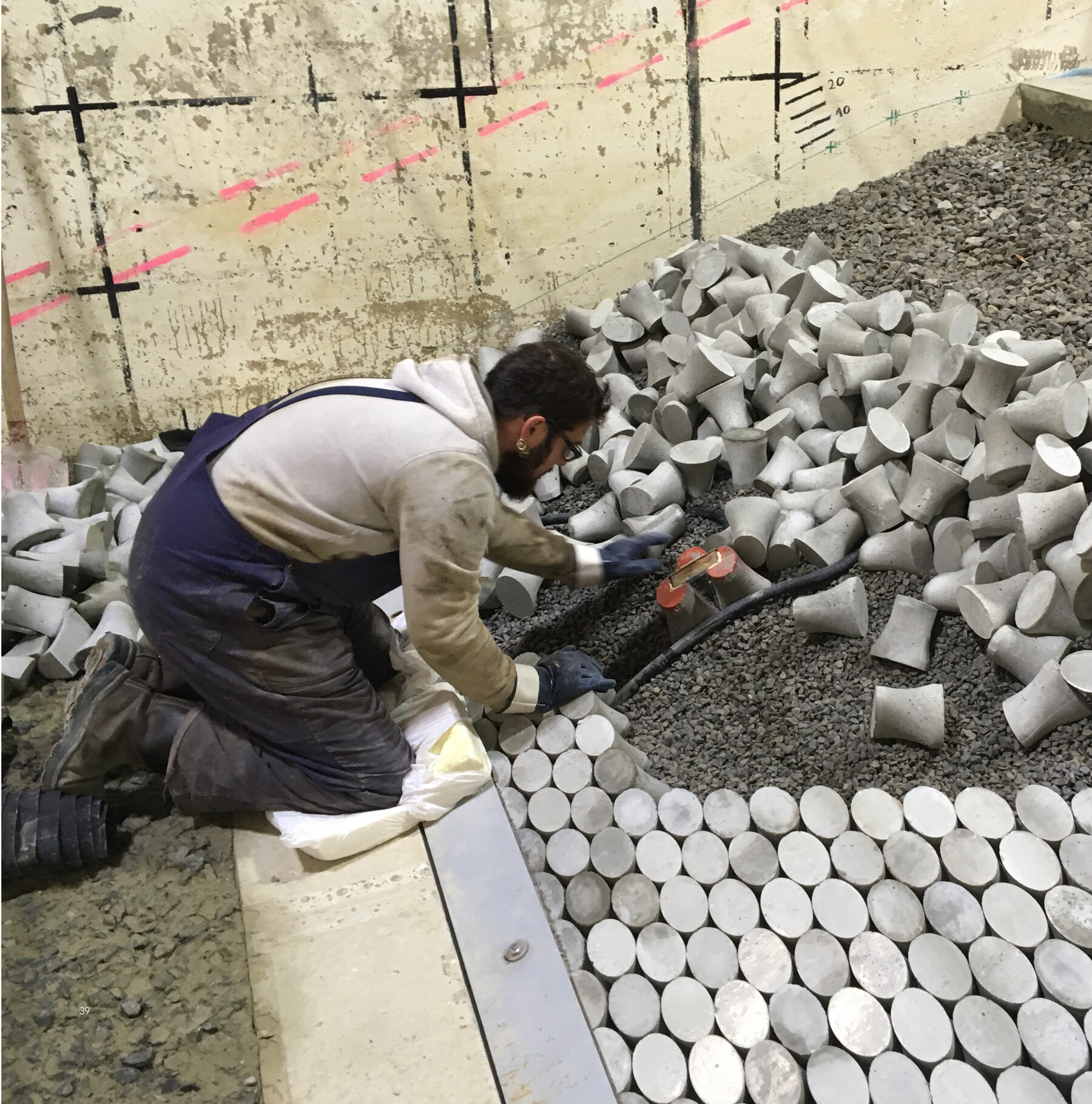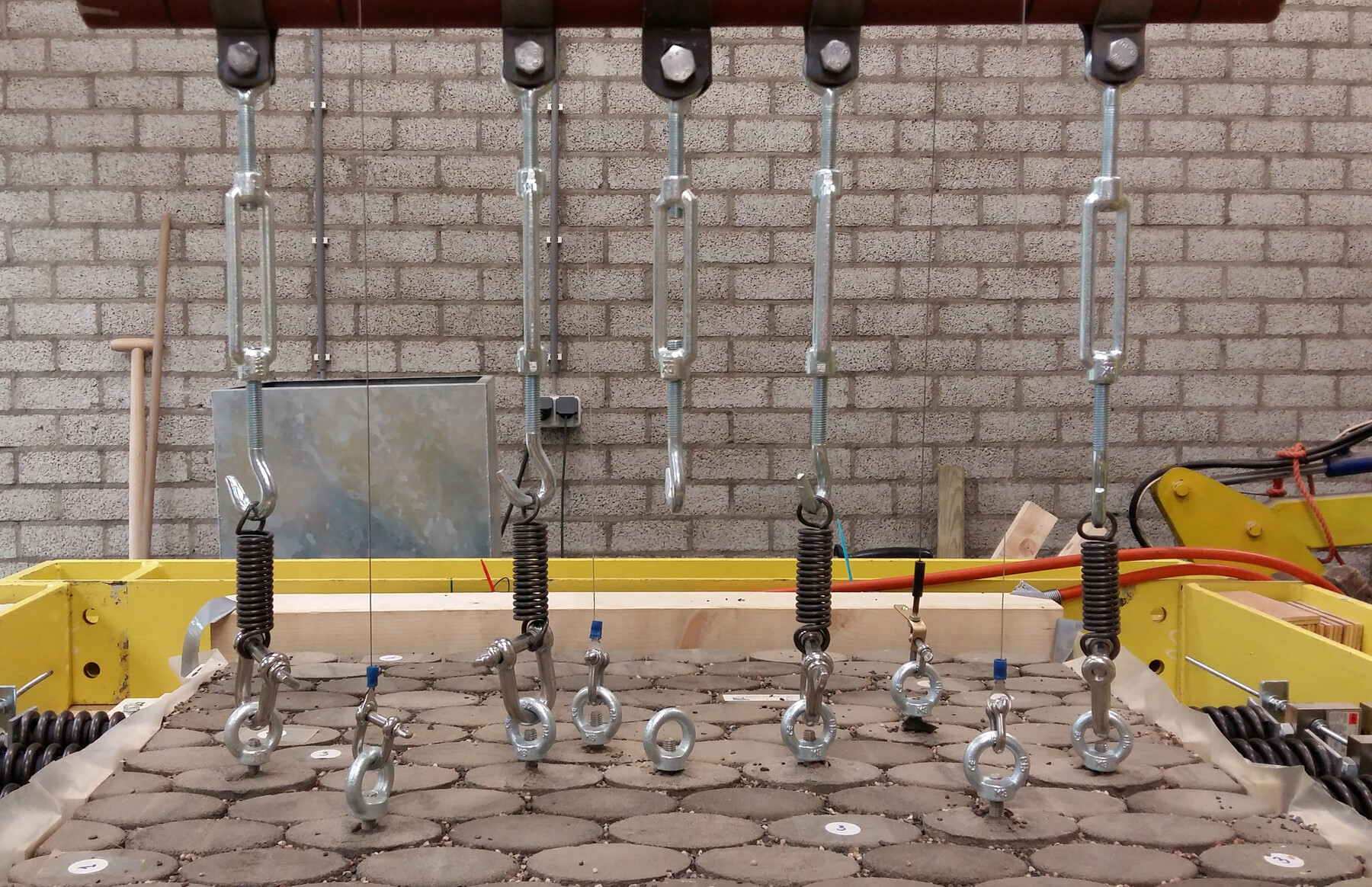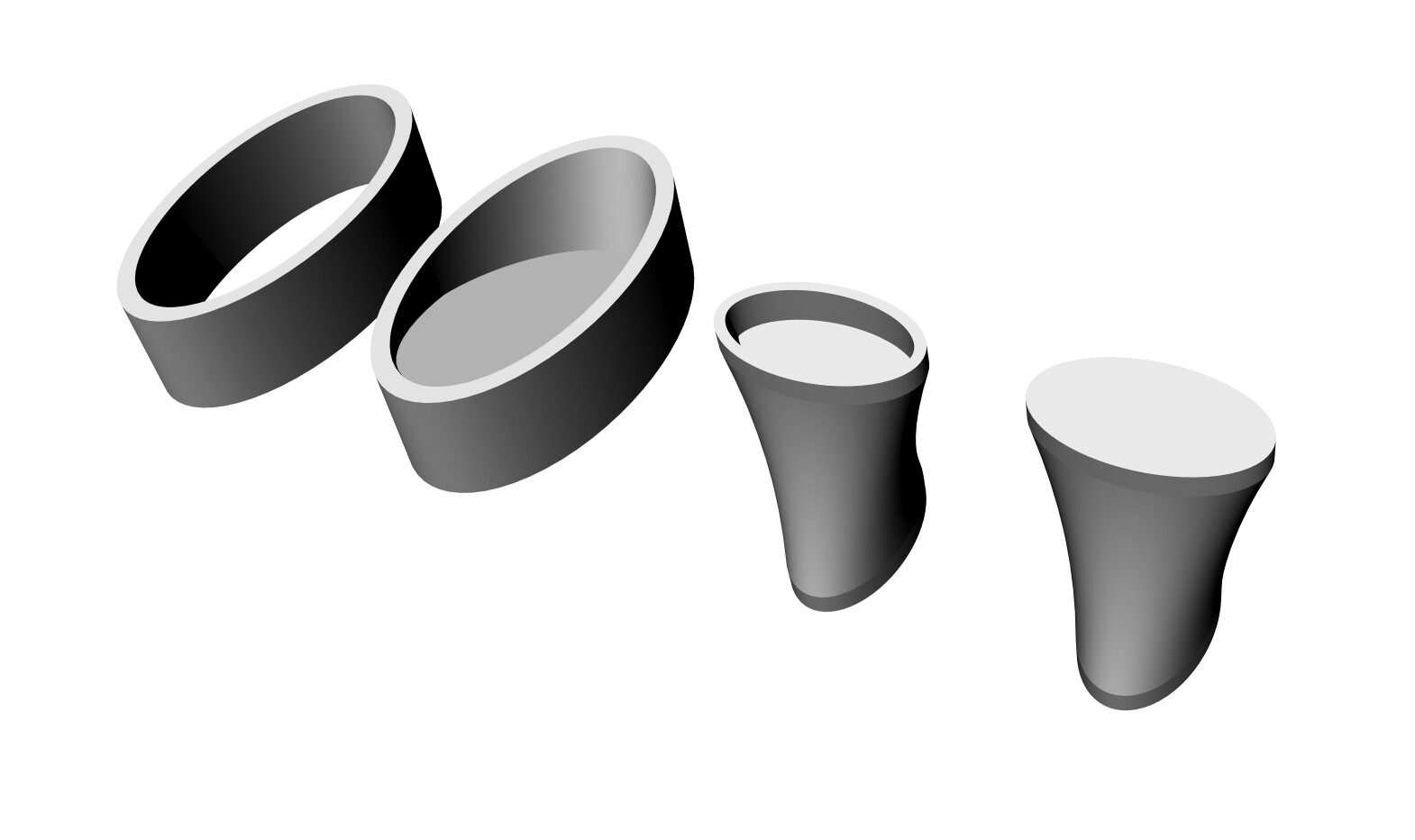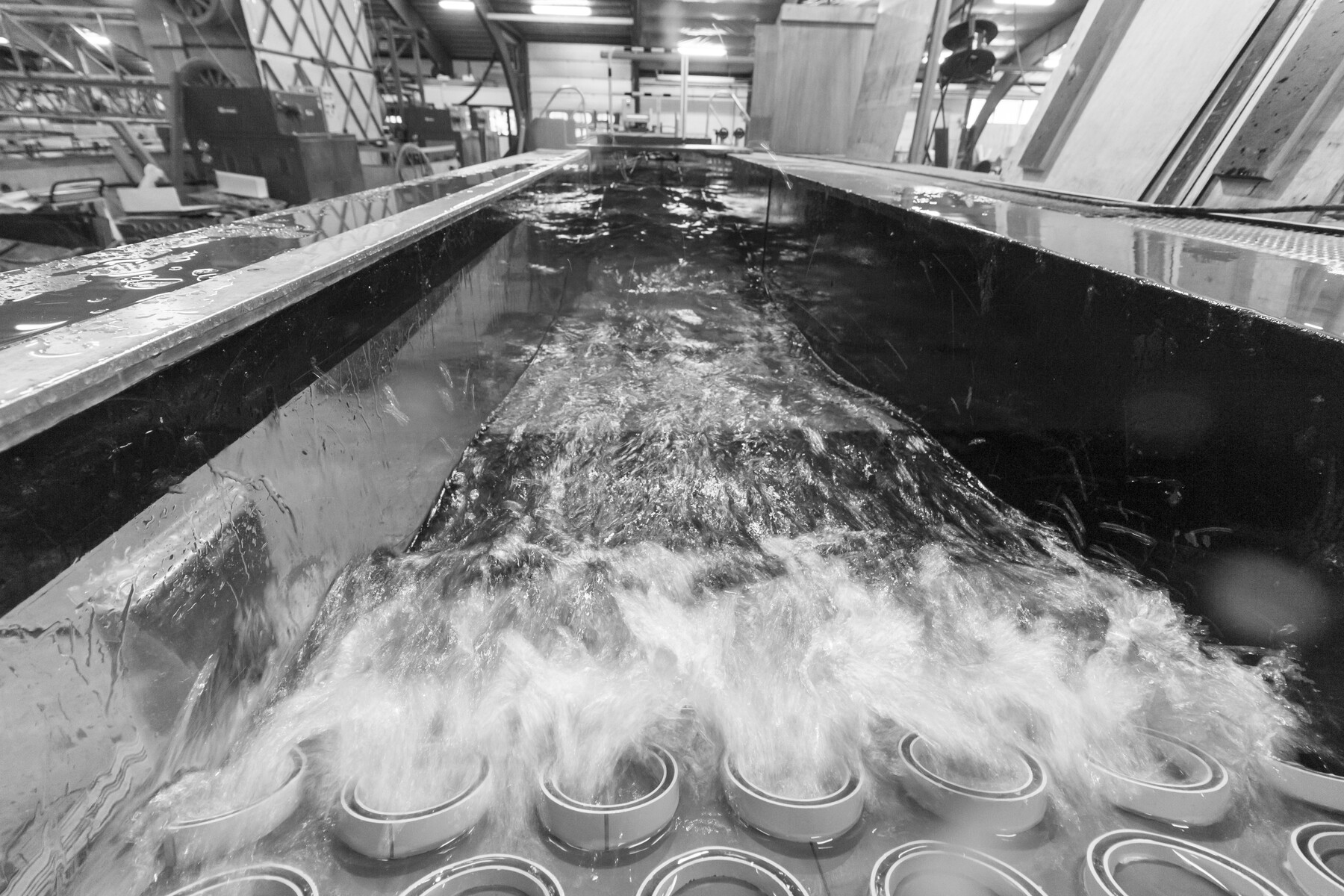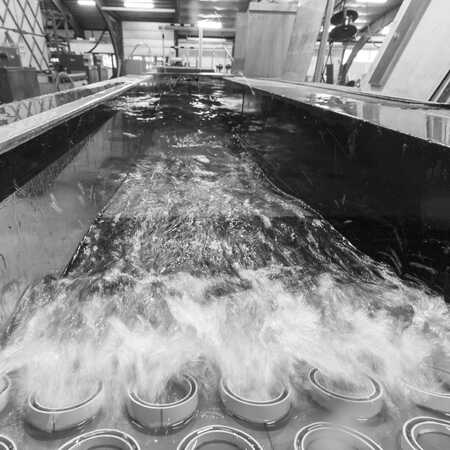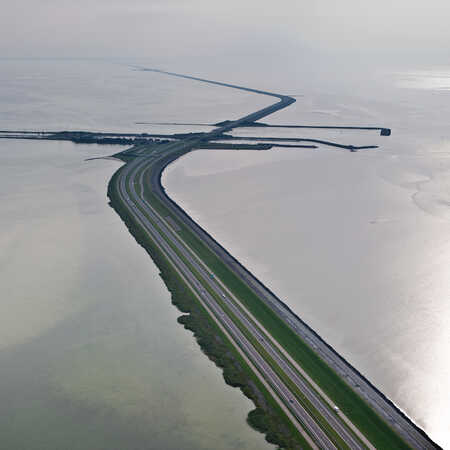What makes the Afsluitdijk special?
In the early decades of the twentieth century, the Afsluitdijk was tremendously innovative. The dyke that dams off what was until then the Zuider 19 Zee is not straight, it bends with the sea currents at the places where the sluice complexes are located. The dyke is so long that it curves to take
account of the curvature of the earth. The dyke and its stone base are the epitome of the dyke-building craft, and their gradients are adjusted to the currents, waves and undulations of the sea. The visionary qualities of its hydraulic engineering alone make the Afsluitdijk a national cultural-historical monument. It is a strong but clever and slim dyke that fits into the Dutch man-made landscape.
